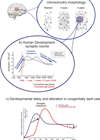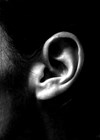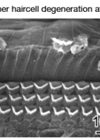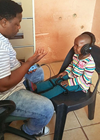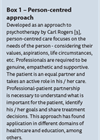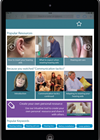Audiology features archive for 2017
Are we making progress on tinnitus?
One of the aspects of tinnitus that drew me into it becoming a major theme of my clinical and research work was how little work had been done when I began to see patients in the mid 1980s. This struck...
What do animal models tell us about tinnitus and hyperacusis?
Do animals have tinnitus? The obvious question to ask is: do animals have tinnitus? It is known that tinnitus is a conscious percept and as such affected by attention and not audible during sleep. For it to be demonstrated that...
Hearing care systems – European examples
In this article, Vice President of the European Federation of Hard of Hearing, Lidia Best, explores the drivers for improvement and change in European hearing care systems. In 2010, the European Committee for Standardization (CEN) issued the EN-15927 European Standard...
Universal newborn hearing screening: a global health perspective
Intuitively, as health professionals, we know that universal newborn hearing screening (UNHS) makes sense. Bolajoko Olusanya outlines how UNHS fits in with global health priorities, as well as illustrating how such programmes can help to deliver additional benefits to communities....
Plasticity with cochlear implants: individual factors in the outcomes
Andrej Kral gives us an overview of neuronal plasticity in congenital hearing loss, and discusses why it is core to our clinical interventions in hearing loss and rehabilitation. The brain is born immature and undergoes extensive shaping during early development....
Fifteen years of vestibular implant research in humans
Implants: it’s all in the balance! Prof Guyot and his team give us an update on their research in addressing bilateral vestibular deficits via an implant. Doctors are often unaware that people, even young, may lose vestibular function on both...
Central auditory changes in SNHL
Robert Harrison discusses some of the most obvious ways in which cochlear hearing loss has central consequences. It is convenient to classify hearing loss according to the most obvious site of lesion, for example, conductive, cochlear, retro-cochlear, or central hearing...
The future of inner ear drug delivery
The techniques for delivering drugs to the inner ear system are evolving. Jeffrey Harris considers the myths, the facts and the potential for drug delivery innovations and how they can improve tomorrow’s hearing outcomes. The inner ear’s delicate membranous structure,...
Screening for hearing loss with mHealth solutions
With the number of people suffering from hearing loss growing all the time, the need for early detection and intervention is imperative. De Wet Swanepoel discusses two examples of mHealth possibilities for hearing screening which, as a low cost solution,...
A person-centred approach to telehealth
“The time when telehealth was a remote, abstract concept has come to an end”. Deborah Ferrari and Lise Lotte Bundesen discuss how to advance person-centred care in hearing rehabilitation through online tools and training. The time when telehealth was a...
Alternative listening devices: reaching the places hearing aids don’t
The stigma surrounding hearing aids means that many people who would benefit from wearing them are put off from doing so. Alternative listening devices could provide the solution to this. David Maidment discusses these devices, their effectiveness and the impact...
Knowledge is power: the power of mobile technologies to enhance hearing-related knowledge
In recent years, the widespread use of smartphones has made it increasingly possible to improve knowledge, understanding and delivery of hearing healthcare. Melanie Ferguson tells us about the advances in mobile-health applications. Think back to five years ago - what...






